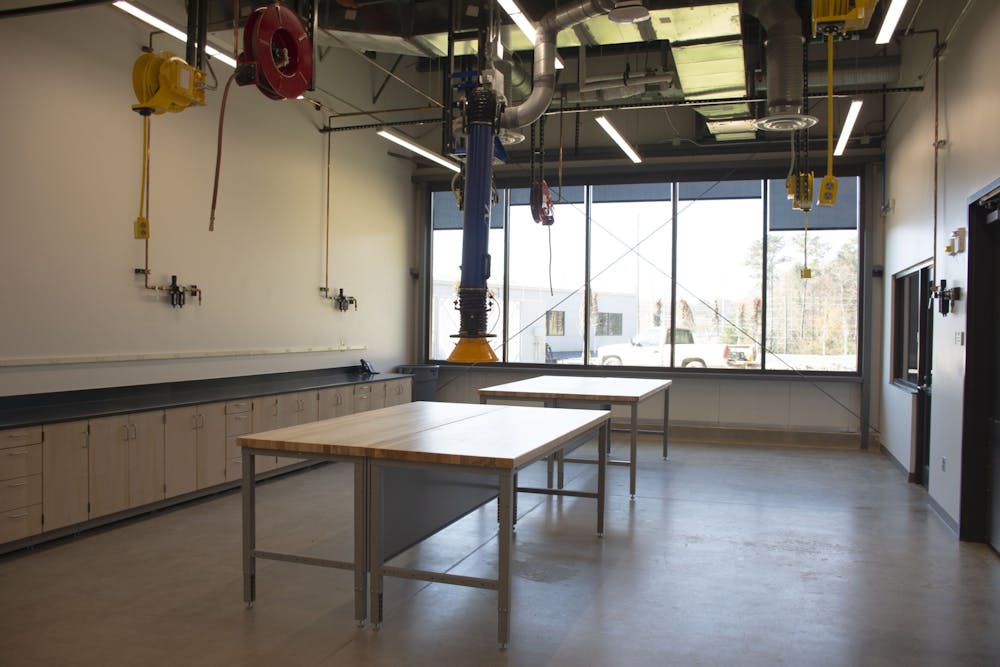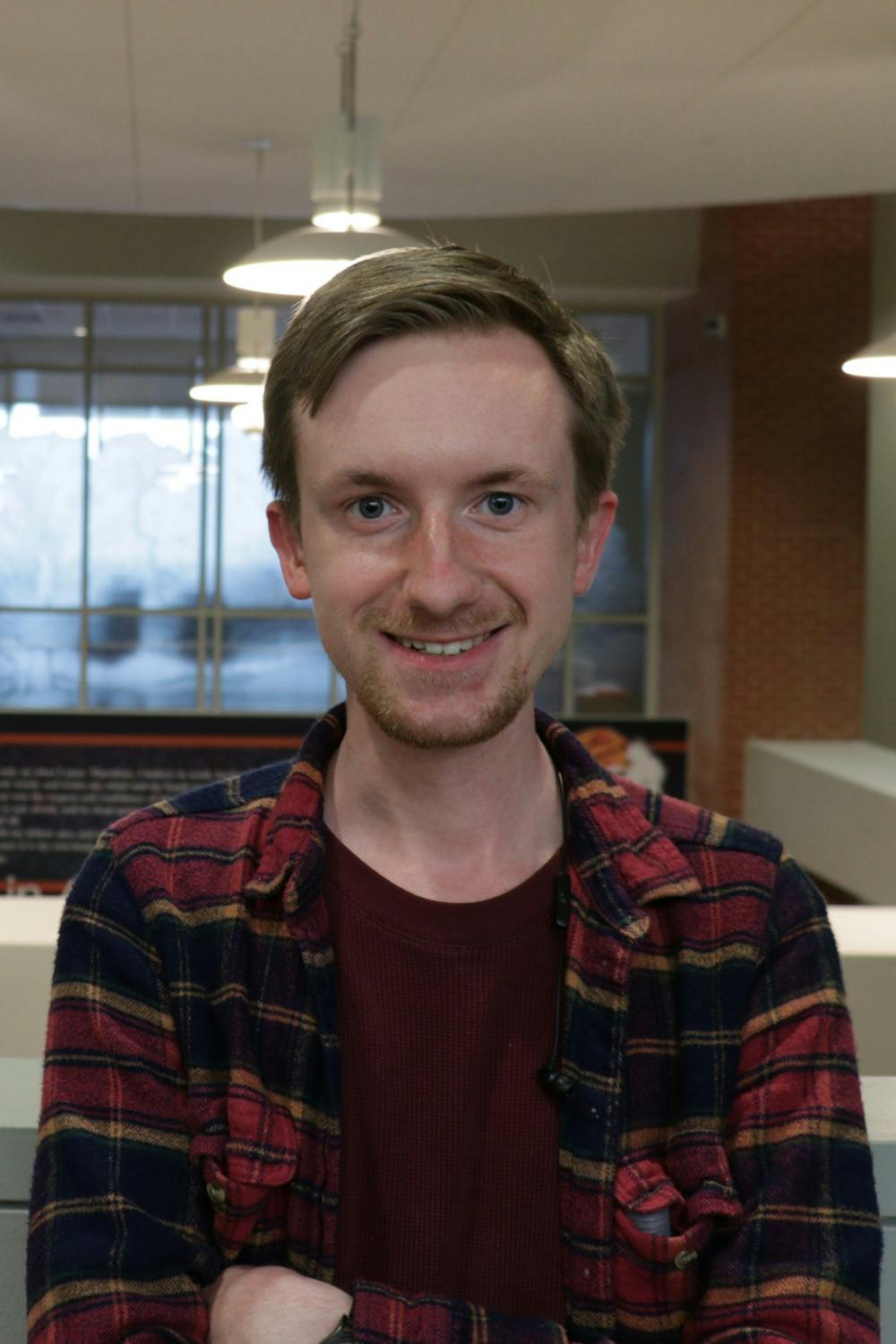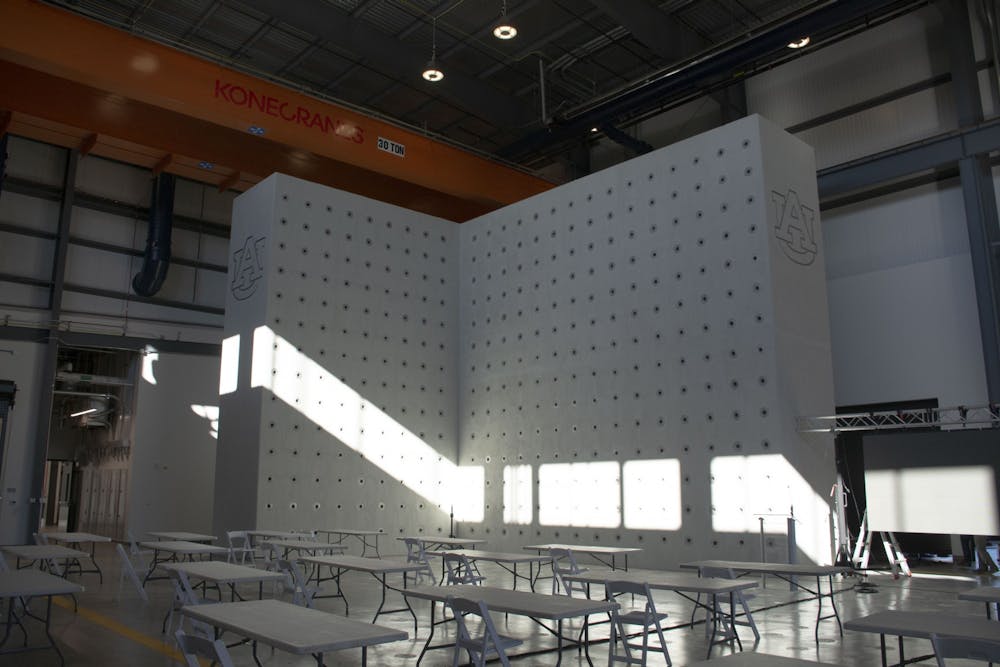Correction: A previous version of this story stated Gov. Kay Ivey and state legislators toured the ASEL on Friday, Dec. 11, but Ivey was not present for the tour. The story has been edited to reflect this, and The Plainsman sincerely regrets the mistake.
Auburn University sought to advance its position in engineering with the opening of its Advanced Structural Engineering Laboratory, where structural and geotechnical engineers will have a place to test infrastructure and building strength in a controlled environment before building in real-world conditions. Construction of the $22 million, 39,000 square-foot laboratory was completed in October, and equipment is currently being moved in.
Justin Marshall, associate professor of structural engineering, was named director of the ASEL and said its presence will be a much-needed resource for engineers across the state in addition to students preparing for their careers in the field at Auburn.
"Because of the scale of the work we do, everything we do we have to rely on scaled-down tests or portions of things that we've tested," Marshall said. "What this lab is meant ... to be [is] that large-scale testing, large-force capacity testing [environment]."
LBYD Engineers, a structural engineering firm based in Birmingham, Alabama, provided design assistance, and Marshall said six of the lab's designers were Auburn civil engineering alumni. Half of the funding for the facility came from Gov. Kay Ivey, Marshall said, and state legislators took a tour on Friday, Dec. 11.

Engineers can insert structures into these reaction frames that line the strong wall and strong floor of the Advanced Structural Engineering Laboratory.
The ASEL is expected to be used for testing how beams, girders and columns meant to support bridges and walls will withstand weather, pressure and other potential risks, Marshall said. The main tools the lab offers engineers are its "strong floor," a 3-foot thick concrete slab, and "strong wall," a 29-foot tall, 17-foot by 31-foot wall. Each are lined with "reaction frames" that columns can be inserted into for testing force.
"We have actuators [right now] that are able to apply load in a controlled fashion ... up to 330,000 pounds," Marshall said. "We've got one coming that can go up to 450,000 pounds, and then we've got a couple more that ... [will] be able to apply loads in excess of a million pounds."
The need to apply this much force in testing is important since the ASEL will involve experiments with structure used in multi-story buildings and stadiums, according to Marshall. The strong wall will allow engineers to apply four 200,000 pound lateral loads of pressure to simulate heavy winds or natural disasters like earthquakes.

Pipes in the basement of the Advanced Structural Engineering Laboratory supply hydraulic fluid to actuators used for applying pressure to structures.
"We would tie the actuator to the [strong] wall, we'd build our system, we'd put the hydraulic actuator in between them, and as it expands, it's applying the forces to the structure and it's reacting them into the foundation of the strong wall," he said.
Marshall said the ASEL stands out among similar facilities at other American universities because it features a 4,700 square-foot geotechnical chamber located within the strong floor which will allow engineers to test soil interaction issues with infrastructure, like erosion of land.
"Imagine you have a telephone pole," he said as an example. "If we were to test how strong it was, we could do that, but to test what happens with the actual soil, we'd have to go outside and put in a telephone pole. Then we don't know exactly what the soil conditions are and there's uncertainties."

Soil can be deposited in the geotechnical chamber of the Advanced Structural Engineering Laboratory to test how it interacts with structures.
Soil can be removed from the chamber via the use of a bucket loader attached to a hydraulic crane above the lab floor. Marshall said the chamber can hold up to 18 dump truck loads of soil before it's filled up.
Marshall anticipates tests in the ASEL to begin in mid-January at the earliest, with the core lab intended for external non-student, undergraduate-funding research. However, students will have space in the facility to use for competition projects, he said.
"We will bring students out here and ... give them tours, but classes won't really be meeting regularly," Marshall said. "Most of the people who we work with from a research perspective are the National Science Foundation and the Alabama Department of Transportation."
Behind the core lab are smaller research rooms used for researching cement-making processes, as Marshall said there has been a growing push in engineering for sustainable methods of developing concrete. The various rooms will allow engineering faculty to test creep — or sustained pressure over time — cracks and other effects of using concrete.

Cement and concrete is researched and experimented with in this area of the Advanced Structural Engineering Laboratory.
"Understanding how to minimize [creep] and how to build structures where things don't crack as much is critical to the performance of the structures," Marshall said.
The back area of the ASEL also provides engineers with an environmental chamber, where concrete will be tested to determine if it might cure faster or be more durable under conditions like humidity or temperature, he said.
One side of the ASEL outside will serve as what Marshall called the "boneyard," or a storage area for tested materials needed to be moved from the lab but kept for later reference. On the other side lies the facility's administrative wing, which includes several faculty offices, work desks for graduate students, a conference room and a break room.

This area serves as an administrative wing of the Advanced Structural Engineering Laboratory for office and desk work.
The ASEL replaces a similar facility located in the Harbert Center built in the 1980s which had a strong floor "less than a third the size of [the ASEL's]," according to Marshall. The older lab did not feature a strong wall or geotechnical chamber, Marshall said.
"We've had a smaller-scale version of this that we've been using," Marshall said. "This is just bigger [with] more capacity and more equipment to be able to use. The closest other lab that is anything like this would be at Georgia Tech."
Do you like this story? The Plainsman doesn't accept money from tuition or student fees, and we don't charge a subscription fee. But you can donate to support The Plainsman.

Tim Nail, junior in journalism, is the campus editor for The Auburn Plainsman.





